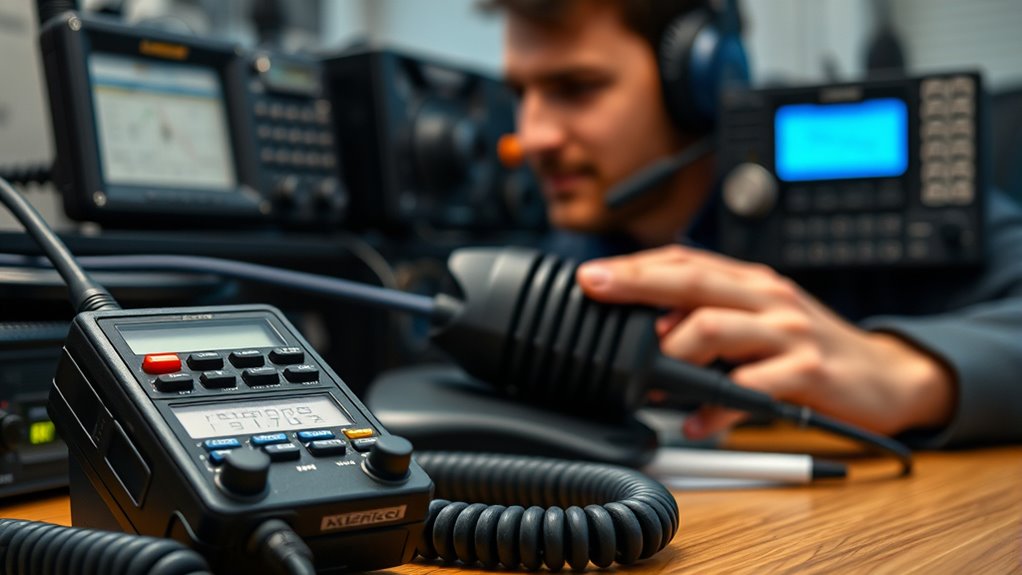To stay safe and be heard, use clear, concise language, avoiding unnecessary words and jargon. Follow proper radio protocol by using standard codes and phraseology, keeping your tone calm and professional. Confirm important messages with repeat-backs like “Roger” and listen before transmitting to avoid overlaps. Manage channels carefully by checking they’re clear and sticking to designated frequencies. Mastering these tools guarantees your communication remains effective—keep going to discover more essential techniques for safe, professional radio use.
Key Takeaways
- Use clear, concise language and standardized phraseology to ensure messages are understood quickly and accurately.
- Confirm receipt of critical messages with acknowledgment phrases like “Copy” or “Roger” to verify communication.
- Maintain proper channel discipline by checking if the frequency is clear before transmitting.
- Keep messages brief and focused, avoiding unnecessary words or jargon that could cause confusion.
- Maintain a calm, professional tone and proper microphone technique to promote safety and clarity.
Using Clear and Concise Language
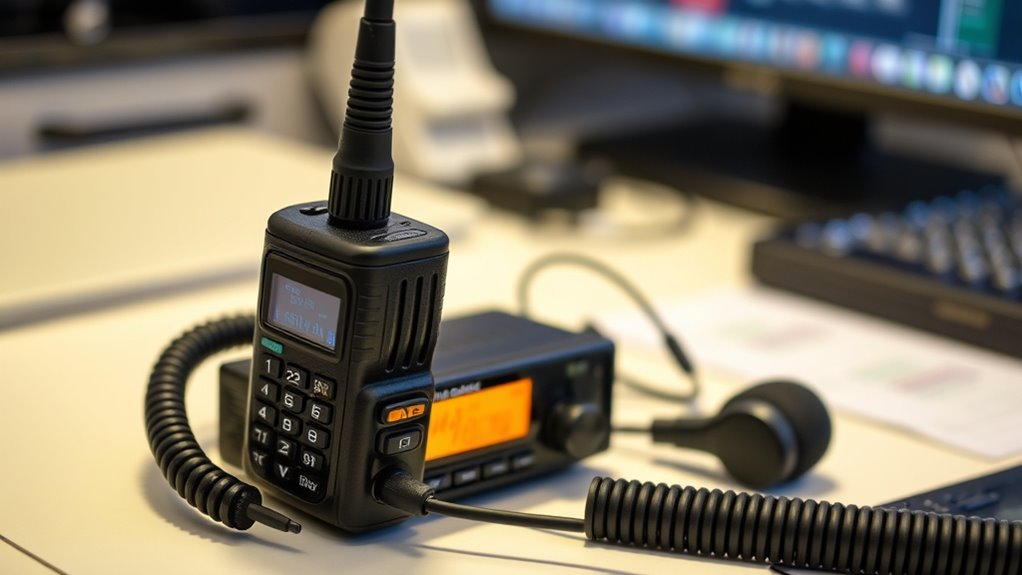
To communicate effectively on the radio, you need to use clear and concise language. This means avoiding unnecessary words and sticking to essential information. Use radio jargon only when necessary and guarantee it’s understood by everyone listening. Clear communication depends on your signal clarity; speak directly into your microphone and avoid background noise. Keep your messages brief and to the point, so others can quickly understand your situation or instructions. Remember, the goal is to prevent misunderstandings and ensure safety. Using simple language helps reduce confusion, especially in high-pressure situations. Stay professional, avoid slang, and confirm that your message has been received and understood. Good radio etiquette keeps everyone safe and ensures your message gets through loud and clear. Additionally, understanding the importance of proper asset management can help in maintaining clear communication during critical moments.
Proper Radio Protocol and Phraseology
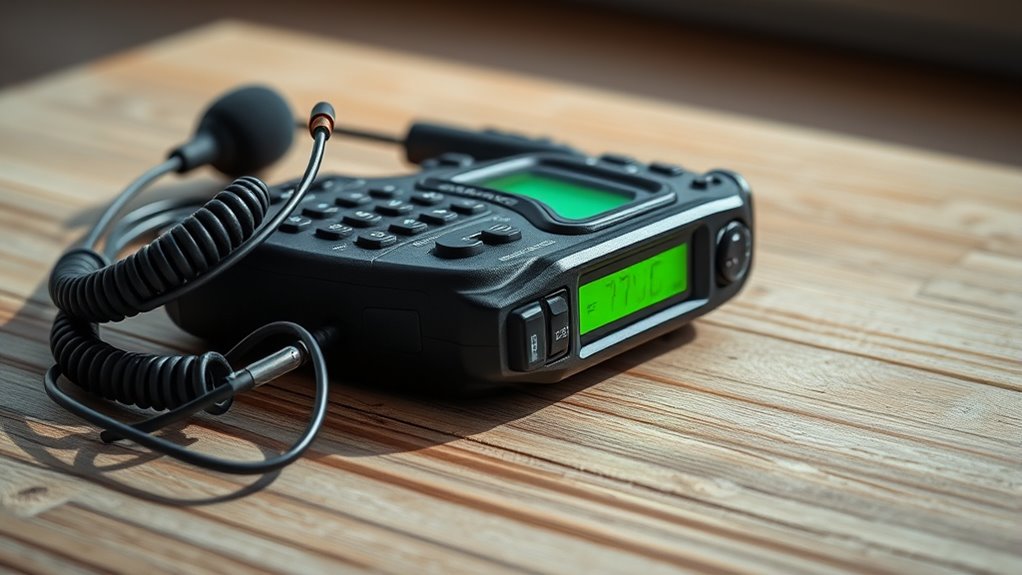
Mastering proper radio protocol and phraseology is essential for clear and efficient communication. Use standardized emergency codes to quickly convey urgent situations without confusion, such as “Code 3” for emergency response or “Code 4” for no assistance needed. Follow signal procedures precisely to maintain order on the radio, like giving your station ID before transmitting and ending with a clear “over” or “out.” Speak in a calm, steady tone, and avoid unnecessary words. Always listen carefully before transmitting to prevent overlaps. Keep messages brief but complete, focusing on critical details. Consistency in your phraseology ensures everyone understands your message immediately, reducing errors and enhancing safety during radio communication. Additionally, understanding celebrity lifestyle insights can help you better appreciate the importance of clear and effective communication in high-profile scenarios.
Maintaining a Professional Tone
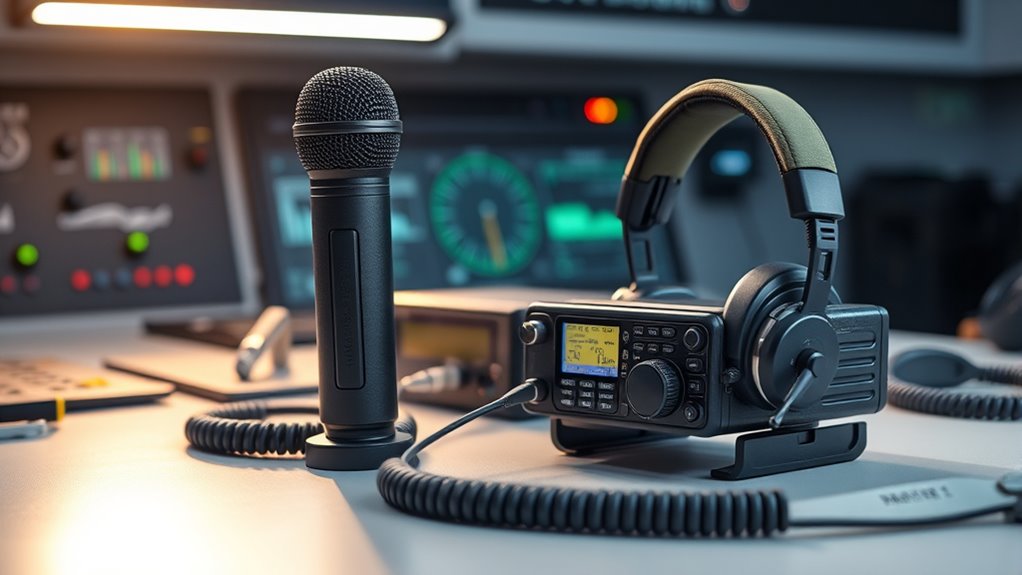
Maintaining a professional tone on the radio is essential for clear and respectful communication, especially in high-pressure situations. Your voice reflects your professionalism, so use proper tone modulation to stay calm and authoritative. Avoid unnecessary radio jargon, and instead, speak clearly to guarantee your message is understood. Keep your language concise and respectful, even if you’re frustrated. Your tone should convey confidence without sounding aggressive or impatient. Remember to pause briefly between messages to avoid overlap and to give your team time to process information. Use a steady, even voice, and avoid shouting or speaking too softly. Staying professional helps build trust and ensures safety, making your communication more effective and reliable. Additionally, understanding offensive and defensive tactics can help you communicate more effectively during security incidents or emergencies.
Confirming and Acknowledging Messages
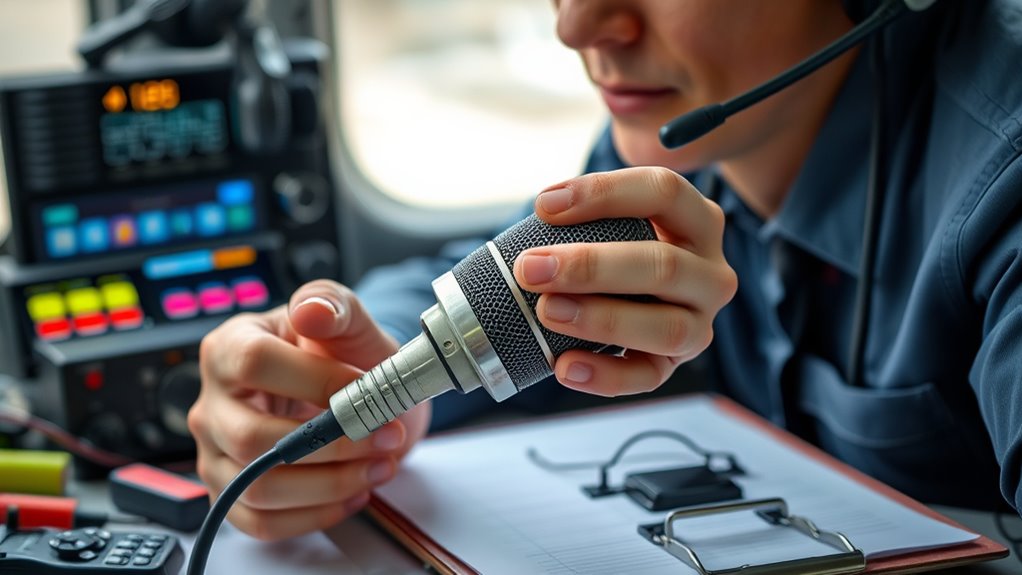
When communicating over the radio, confirming and acknowledging messages guarantees everyone stays on the same page. Use clear confirmation techniques, like repeating critical information or key instructions to verify understanding. This practice helps prevent misunderstandings or missed details. Follow acknowledgment procedures by explicitly confirming receipt with phrases such as “Copy,” “Received,” or “Roger.” Always respond promptly and clearly to messages, especially those involving safety or important instructions. If you didn’t understand something, ask for clarification immediately. Proper acknowledgment not only confirms your receipt but also shows your attentiveness. Incorporating these confirmation techniques and acknowledgment procedures keeps communication effective, reduces errors, and ensures safety for everyone involved. Staying aware of the importance of accurate communication is crucial in maintaining safety and efficiency. Stay precise, concise, and attentive when confirming and acknowledging messages on the radio.
Managing Channel and Frequency Use
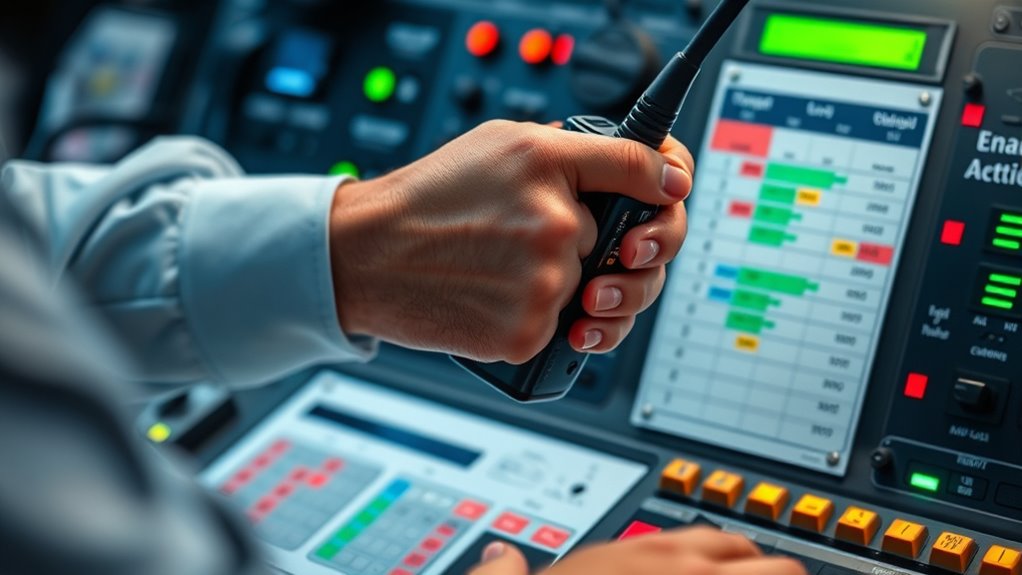
Effective management of channel and frequency use is essential to guarantee clear and efficient radio communication. By practicing good channel discipline, you prevent unnecessary chatter and stay focused on important messages. Proper frequency coordination ensures everyone stays on the right channel, avoiding interference. Always listen before transmitting to confirm the channel is free. Use designated channels for specific purposes to keep communication organized. Regularly check your equipment to prevent technical issues. Respect others’ time and space on the radio to maintain professionalism. Incorporating sound design techniques can also help in establishing clear audio signals during transmissions.
Frequently Asked Questions
How Do I Handle Radio Emergencies Effectively?
When handling radio emergencies, you need to follow emergency protocols and prioritize signal clarity. Stay calm, speak clearly, and use concise language to communicate your situation. Keep your transmissions brief and to the point, avoiding unnecessary chatter. Always listen carefully for instructions, and confirm receipt to guarantee your message gets through. By maintaining discipline and clarity, you help keep everyone safe and ensure your message is understood quickly.
What Are Common Radio Mistakes to Avoid?
Making radio mistakes is like trying to navigate a maze blindfolded. To avoid errors, stay clear of confusing radio jargon and stick to proper protocol. Speak clearly and concisely, using standard phrases to guarantee your message is understood. Never interrupt others, and always identify yourself properly. Remember, rushing or using slang can lead to misunderstandings. Keep calm, stick to the basics, and you’ll be heard loud and clear!
How Can I Improve My Radio Communication Skills?
To improve your radio communication skills, focus on sharpening your listening skills and ensuring message clarity. Practice active listening to catch details and respond promptly. Keep your messages concise, clear, and organized, avoiding unnecessary details. Use proper radio etiquette, such as speaking slowly and clearly, and confirm receipt of messages. Regularly reviewing protocols and seeking feedback can also help you communicate more effectively, making sure you’re heard and understood.
What Equipment Is Essential for Safe Radio Use?
To guarantee safe radio use, you need essential equipment like a reliable radio device, a headset for clear communication, and a backup battery. Follow proper radio protocol to avoid misunderstandings, and regularly check your equipment maintenance to keep everything functioning correctly. This way, you stay connected and safe, especially in critical situations. Proper equipment and adherence to protocol are key to effective and safe radio communication.
How Do I Troubleshoot Radio Signal Issues?
When troubleshooting radio signal issues, start by checking your antenna tuning to make certain it’s properly aligned for peak reception. If signals remain weak, consider signal boosting devices or adjusting your antenna’s position for better reception. Make sure your radio is powered correctly and verify there are no obstructions blocking the signal path. Regular maintenance and testing can help keep your radio functioning smoothly, guaranteeing you stay connected and safe.
Conclusion
Mastering radio etiquette keeps you safe and guarantees you’re heard, just like a seasoned captain steering through rough seas. Use clear language, stick to proper protocols, stay professional, confirm messages, and manage channels wisely. Remember, good communication is your best armor—no need for a quill and ink! By following these tools, you’ll navigate any situation smoothly, earning trust and respect just like the trusty ship’s crew of old. Stay sharp and communicate with confidence!
